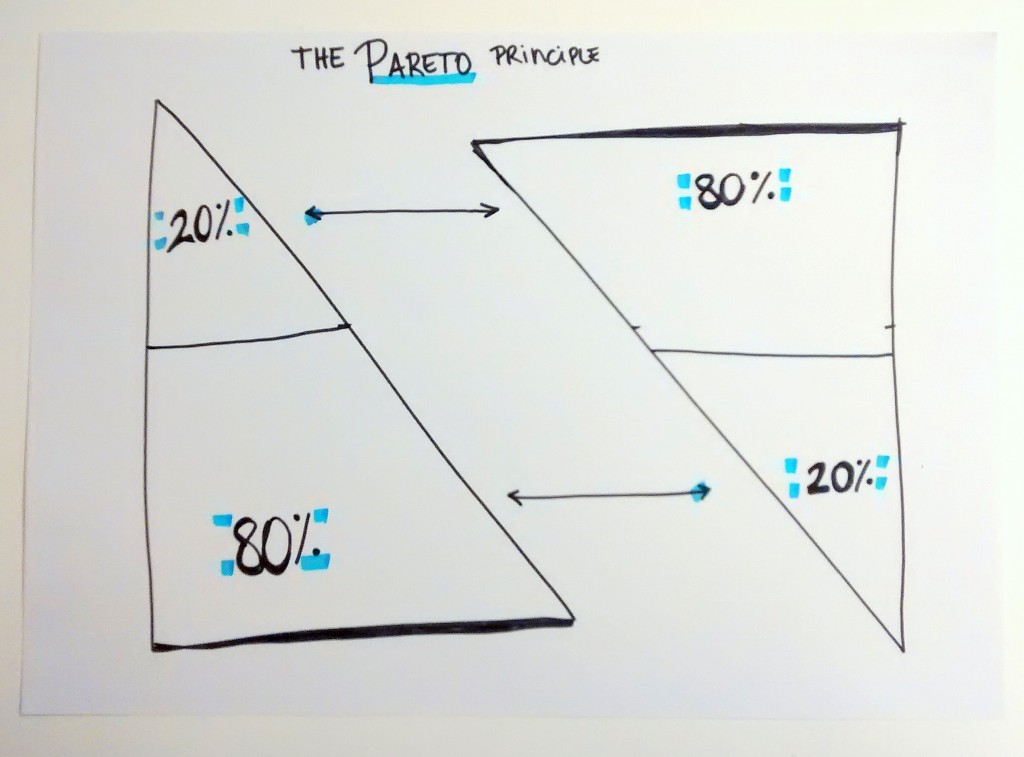If you’ve been around for a while, reading about Content Marketing and Social Media best practices, you sure have stumbled with the 80/20 rule. Blog posts, articles, infographics… And every now and then this 80/20 rule would appear. That’s why we decide to do some proper research to find out how did this rule comes out and how does it arrives to social media.
The Origins
Everything started in Economics. In the 1906, Vilfredo Pareto, an Italian sociologist, mathematician and philosopher, discovered that 20% of the Italian population owned 80% of the land. And this proportion repeated in many other countries and many other daily life aspects, such as power distribution, material wealth, etc.

The principle was used to justify, among other things, the fascist ideology. The fascist intervention would ideally break this rule and make society “fairer”.(?!)
In Business
In the 1940′s Dr. Joseph Juran found a similar percentage in Quality Management. Dr. Juran established the difference between the “20% vital few“ and the “80% trivial many”. In his experience, managing quality standards, 20% defects caused 80% of the problems and complaints from clients.
This principle was quickly spread to other aspects of the economy and business. Like, the 80% of a business revenue come from the 20% of their customers. For managers, according to F. John Reh, this means to learn to focus time, resources and energy on the 20% that matters. Opposed to the Pareto principle in sales, there is the long tail theory.
Apparently, Richard Koch, a British author was the responsible for spreading it through other concepts through fields like business management, work/life balance and happiness. Mr. Koch developed an extensive bibliography on this golden rule and how to apply it to every aspect of one’s life.
The principle extended as one of the pillars of the “work smarter” philosophy. The books of Richard Koch influenced and applies to several books that became famous, like the 4-hours work-week.
This matches perfectly with the big trend on outsourcing tasks that are not core for your business/life success. It also goes along with the “do what you love- follow your passion” philosophy, that may not turn to be a good career advice .
The 80-20 rule for contents
The idea get summarized in this:
80% of your outcomes come from the 20% of your inputs
If we go back to the very first principle, the 20% of your content will make 80% of the revenue or leads. Under this perspective, only 20% of the content should be for sales purposes, self-promotion, lead generation and advertisement.
The other 80% should be about your customer: the problems they usually have, interesting data regarding your industry and other things that can be linked to your brand but nor purely sales content.

Joe Pullizi has a fun story about this: nobody wants to be friends with someone who only talks about oneself. This is and interesting customer-centric approach to the content and how brands should behave in Social Media.
In this scenario, you better have a good content curation tool to help you fuel up those social media profiles. And find, edit and publish effective content in a reasonable time.
The 80/20 rule appears in many compendiums of “best practices” in social media for business, like this piece in the Entrepreneur magazine, and the article that triggered this post: A Content Marketing Manifesto: 10 Principles to Drive Creative Content. Is it really applied by brands? Well, we’ll see it in another post.
Tips for kinds of contents you can fit into your 80/20 fueled content strategy in Social Media. Infographic by Company.com
And there’s another 80/20 rule for content some marketers and blogger have:
Spend 20% of your time creating great content, and the other 80% distributing it. Otherwise the content won’t be found.
This, for some people can mean that more than a writing business, they have a PR business. And outsourcing this task may seem more like an interesting possibility.
Do you have any other Golden rule of proportions you’d like to share with fellow marketers?
(746)






